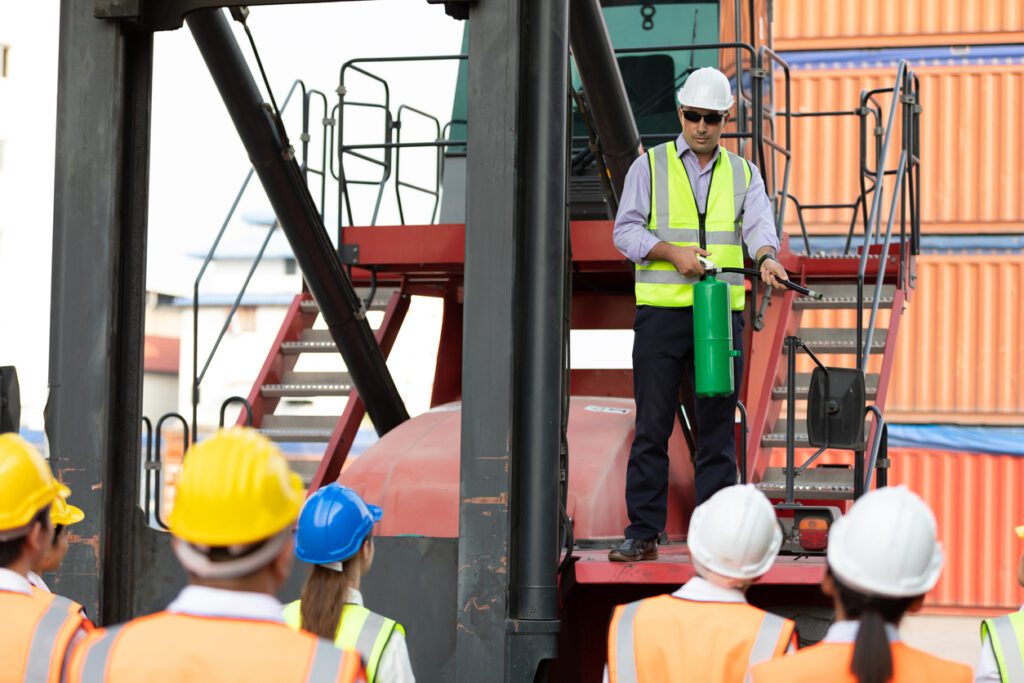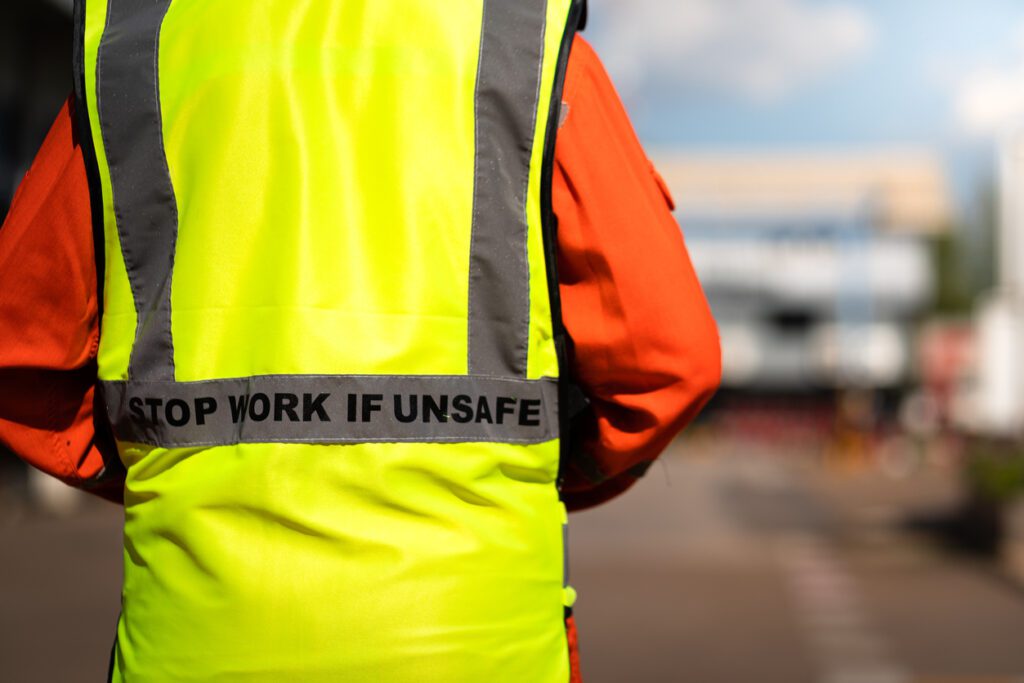Few careers offer the challenge of solving complex problems and the reward of knowing you helped ensure someone’s safe return home at the end of the workday.
Safety and risk professionals play a vital role in protecting lives, preventing injuries, and creating stronger workplaces. But what does it take to build a successful career in this important field?
Brandon Jones, Director of Safety and Risk Services at MEM, has spent nearly 35 years helping businesses create safer workplaces in a variety of industries. He holds several certifications and has spent decades in both hands-on consulting and management in the environmental health and safety field. Today, he shares insights about building a rewarding career in safety and risk management.
Why pursue a career in safety and risk management?
According to Jones, the most compelling reason to enter the safety field is the meaningful impact you can make on people’s lives. Safety professionals work to reduce injuries and eliminate workplace exposures, protecting employees’ health and well-being.
“You see those successes,” Jones explained. “You get thanks from those employees for how you’ve helped them and made their workplace better. It really motivates you to continue to do more.”
The field offers remarkable versatility. Safety professionals can work in:
- Construction
- Manufacturing
- Transportation
- Healthcare
- Agriculture
- Plus many other industries
“That’s the beauty of what we do in the insurance world,” said Jones, “and why I’ve tried to convince a lot of school-age kids that they ought to pursue a career in safety and health – just because it can take you down so many different paths.”
A career in safety appeals to people who enjoy helping others, working with people, continuously learning, and staying curious by nature. If you don’t want to be stuck in an office every day, safety offers the perfect blend of field work and meaningful human interaction.
📍 Read a real story about how an MEM safety professional saved lives: A Breath of Fresh Air: How Safety and Risk Expertise Saved the Day >

Essential skills and traits for safety success
While technical knowledge is important, some of the most critical skills for safety professionals might surprise you. Safety professionals must influence others to implement their recommendations since they rarely have direct control over work environments. “You’ve really got to speak their language and tie it back to the why – what’s in it for them,” Jones said.
Beyond influence, successful safety professionals need strong people skills, curiosity, adaptability, and clear communication abilities.
Education and certification paths
A strong educational foundation sets you up for success in your safety career. Jones recommends pursuing a Bachelor of Science in safety and health or related fields, such as:
- Safety management
- Risk management
- Occupational health management
- Industrial hygiene
When choosing a program, look for accredited options. The educational landscape has evolved over the years, and most universities now offer remote learning options. “The beauty today is that most of these universities offer remote learning,” Jones noted. “You can do it from home if you’re not able to travel.”
Professional certifications like CSP (Certified Safety Professional) and CIH (Certified Industrial Hygienist) can advance your career, though these typically come after gaining some field experience.
☑️ The bottom line: For those just starting out or early in their career, a degree in safety or a related field establishes the foundation employers look for, making it easier to land that first role.
Career progression and getting started
Starting with a safety-related degree is a great way to break into this career, but it’s not the only way. It can start with a variety of different paths. Many successful professionals had prior industry experience in construction, agriculture, manufacturing, or other fields before transitioning to safety roles.
Internships provide valuable real-world exposure for new graduates. In the field, the learning curve is steep but rewarding, as you can immediately apply your experiences to new challenges.
Mid-career transitions are possible, too. Jones has seen former firefighters, police officers, and people with criminal justice degrees succeed in safety roles. “We can teach anybody safety,” Jones remarked, “but what we really look for… boils down to their personality, their style and how well they work with people.”
📍 New to a safety role? Here are our top three tips to start off on the right foot: Safety Manager 101: 3 Tips to Help Professionals New to Safety Roles >

A day in the life of a safety professional
Every day brings something different, which makes the work exciting and engaging. “That, to me, is what makes our profession and our roles here at MEM exciting, because every day is different,” Jones said.
Daily activities might include:
Field work
- Site inspections
- Hazard evaluations and safety assessments
- Equipment evaluations
Administrative work
- Reports and documentation
- Strategic planning
- Scheduling site visits
Training and development
- Employee safety training
- Management presentations
- Custom program development
There’s no shortage of variety. Jones noted that success requires self-motivation and planning skills, as safety professionals often control their own schedules and must determine the best use of their time.
Building and maintaining safety culture
Modern safety professionals do much more than traditional compliance work. Jones and his team have evolved their approach over the years. “We’ve actually started calling ourselves business consultants, because we get involved in so much more than just safety,” he explained. This broader approach can include examining hiring practices, wages, and turnover rates, since organizations with high turnover typically have more claims and injuries.
Creating lasting change requires leadership support from the top. “If an employer is willing to partner with us, then we can move mountains,” Jones said. Finally, communication plays a crucial role in building a safety culture. Organizations need to communicate why safety initiatives matter and how they benefit everyone.
Technology and data in modern safety careers
The health and safety field continues to evolve alongside technology. Jones noted how industrial hygiene monitoring equipment has become dramatically smaller and lighter. Real-time analysis capabilities are quickly replacing the need to send samples to labs.
Technology improvements include artificial intelligence applications, wearable technology, robotics integration, and advanced data analytics. However, this abundance of data also brings new challenges. “You can almost be overcome by too much data,” explained Jones. “Finding what is meaningful, what’s going to move the needle for you, is the key.”
The pace of technological change requires continuous learning and staying current with industry trends through professional development.
📍 Check out this example of how technology keeps employees safer: Safety Solutions: How New Technology Protects Isolated Employees >
Professional development and networking
Building relationships within the safety community is essential for career growth. “Being involved in local or national organizations is key,” Jones advised, “because there’s always going to be someone out there who’s either experienced it or has the knowledge that you’re seeking.”
Professional networks provide invaluable support throughout your career. Jones’s experience with these organizations has shown him that safety leaders across the country face similar challenges.
Did you know? Developing a skilled workforce is one of the three focus areas for our corporate impact program at MEM. Our safety consultants participate in events like Build My Future, where high school students learn about careers in construction. This gives us the opportunity to highlight safety management as a career and encourage the next generation of safety pros.

Your path forward in safety
With a career in safety and risk management, you can make a real difference while building expertise across industries.
“It’s a very rewarding profession, especially when you see the success of your efforts,” Jones said. “That’s what motivated me to continue to move forward in a career.”
The field rewards those who stay curious and embrace change. “Continuous learning is really, for me, what it’s all about,” concluded Jones, “and really seeing the successes we have preventing injuries, reducing exposures, and protecting the health and well-being of the people who are out there working every day.”
Hear from other MEM safety professionals on these WorkSAFE Podcast episodes:
Slips, Trips, and Falls: Don’t Sweep Safety Risks Under the Rug >
Industrial Hygiene: Your Guide to Hidden Workplace Hazards >